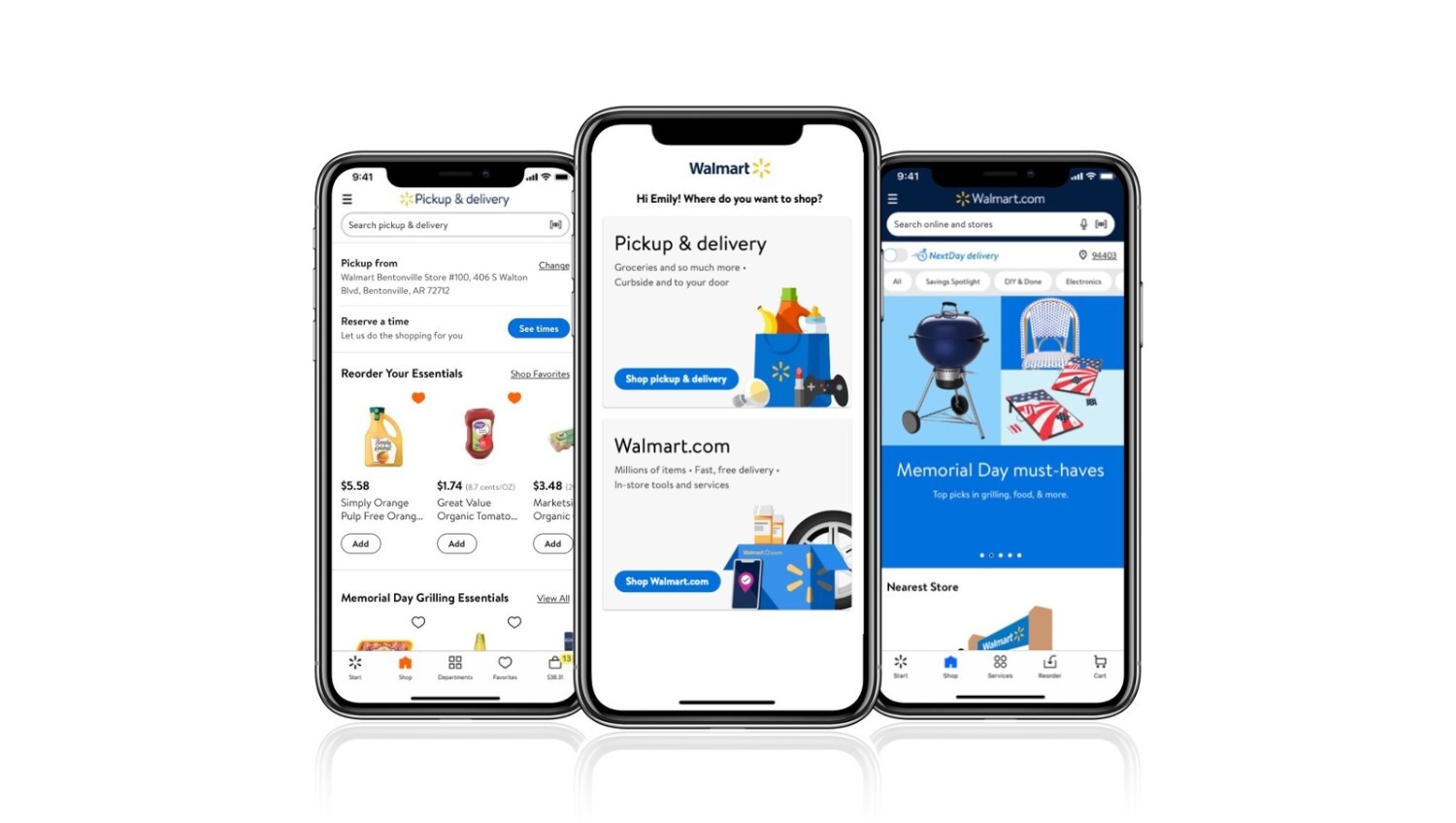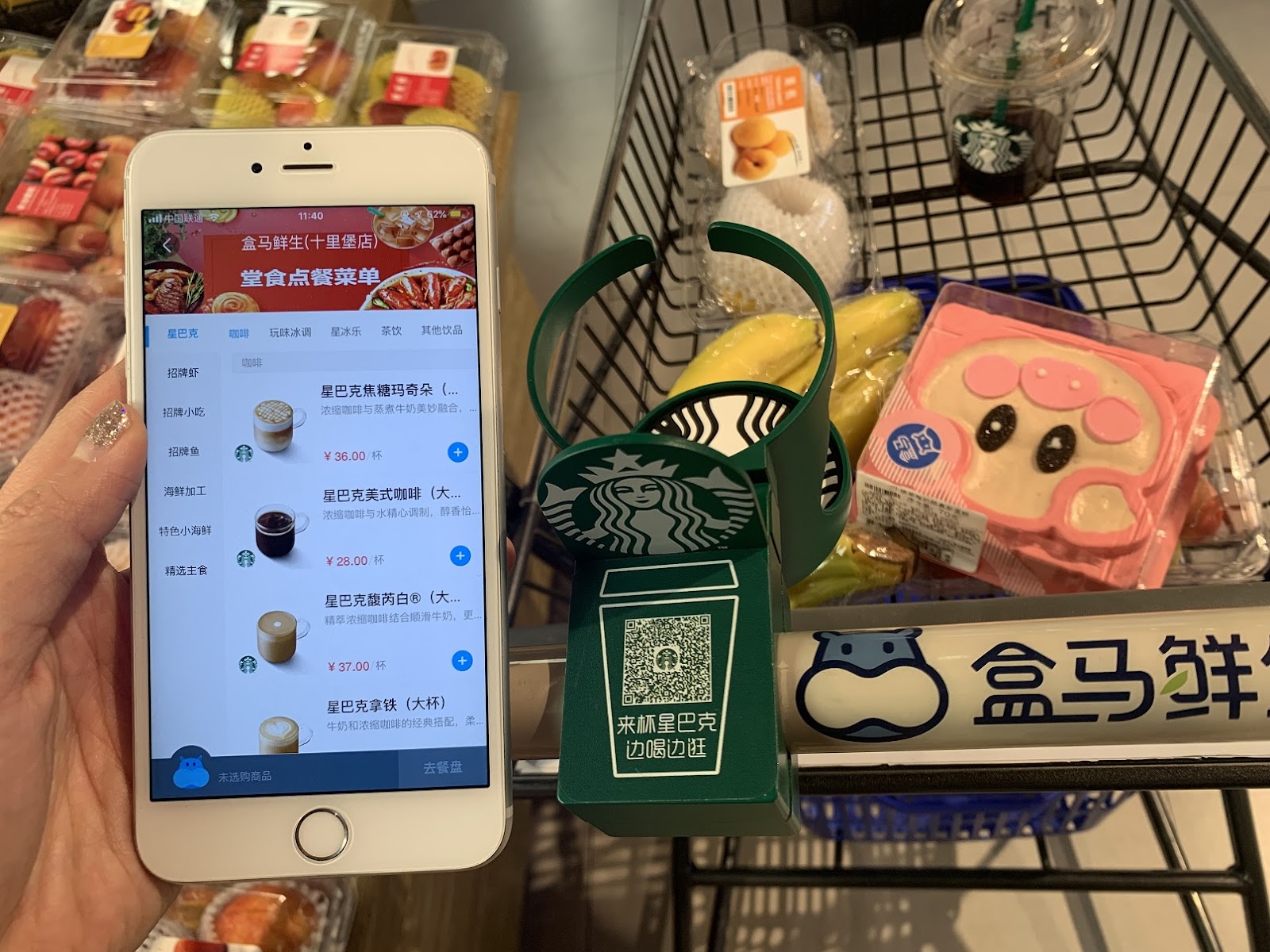Do you ever feel frustrated when you know your favourite beverage is available on the store’s shelf but not on your grocery app?
As a consumer packaged goods (CPG) brand, providing a seamless shopping experience can be challenging, but today’s shoppers expect it to be similar both online and in-store.
Let’s say you’re an innovative brand that has created a more refreshing beverage with higher quality ingredients than your competitors. How can you grab the attention of online shoppers? How do you make your brand stand out in an e-commerce environment where browsing is not standard?
Unlike in a physical store, where you might spot a fun product on an end cap and make an impulse purchase, online shopping is often more focused on searching for specific items, voice shopping, or adding from a previous list to a cart. Brands must find different ways to make their products visible, such as through banner ads or being part of a promoted group of items.
With so many different ways to shop for products, brands must also consider the other places and methods consumers use to make purchases. For example, a brand might choose to feature its vitamin supplements in a different place on the app’s homepage, depending on whether it’s the New Year’s resolution season or the summer season when people are focused on health and outdoor activities. Regardless of where and how consumers shop, they expect their brand experience to be seamless and consistent.
The Rise of Omnichannel Shopping
Today, consumers want it all — variety, quality, and top-notch service —and expect the same experience online as offline. That’s why the grocery sector is stepping up its game and undergoing a transformation like never before. Using technology and data analytics, retailers create omnichannel experiences that are as informative and convenient as in-store shopping.
But what exactly is omnichannel shopping?
It’s the strategy of seamlessly integrating online and offline shopping experiences to meet the heightened expectations of modern consumers. It’s not just about offering multiple channels but creating a cohesive, integrated model that makes the transition from digital to physical shopping virtually indistinguishable.
Consumers can start their shopping journey on their smartphone, continue on their laptop, and complete it in a physical store —or any other combination. Each step is synchronised to provide a unified experience, with each channel playing a complementary role in the consumer’s journey.
The significance of omnichannel shopping lies in its customer-centric nature. It recognises and responds to the modern consumer’s desire for flexibility, efficiency, and personalised engagement. By integrating various shopping channels, retailers can meet customers “where they are,” catering to their preferences and habits in a manner that enhances satisfaction and loyalty.
What do shoppers want?
Here’s what customers typically expect from an omnichannel shopping experience:
- Consistency Across Channels: Customers expect a consistent experience across all platforms. This includes uniformity in product availability, pricing, and brand messaging. Whether they’re browsing an online site or a mobile app or visiting a physical store, the experience should feel cohesive and integrated.
- Personalisation: Personalised shopping experiences are highly valued by customers. This could mean personalised recommendations based on previous purchases and browsing history, customised marketing messages, or the ability to repeat past orders easily. Omnichannel strategies leverage data analytics to offer these tailored experiences across all touchpoints.
- Convenience and Flexibility: Customers look for convenience and flexibility in shopping and receiving their products. Features like buy online, pick up in-store (BOPIS), easy returns across channels, and multiple delivery options (same-day delivery, curbside pickup) are highly sought after. The ability to seamlessly switch between channels depending on their in-the-moment needs is crucial.
- Real-Time Inventory Visibility: Shoppers expect to see real-time inventory across all channels. If they view a product online, they want to know if it’s available in their local store or vice versa. Accurate, up-to-date information helps make informed purchasing decisions and enhances customer satisfaction.
- Integrated Customer Service: Omnichannel experiences also extend to customer service. Customers expect to receive support through multiple channels (e.g., phone, online chat, email, social media) and for their history and interactions with the brand to be accessible across these channels to ensure they don’t have to repeat themselves whenever they switch mediums.
- Unified Payment and Loyalty Programs: Seamless integration of payment systems and loyalty programs across all shopping channels is another expectation. Customers want to be able to use their preferred payment method, apply discounts, and earn or redeem loyalty points whether they’re shopping online or offline.
The goal is to create a frictionless, engaging, personalised shopping journey that meets customers’ needs at every touchpoint.
Omnichannel strategies take the shopping experience to a whole new level, exceeding customer expectations by enhancing customer satisfaction, boosting loyalty, and strengthening the bond between brands and consumers.
Integrating online and offline channels has never been more important, as it allows for improved data collection and analytics, leading to better-informed product development, marketing, and inventory management decisions. This, in turn, helps brands stay efficient and profitable while adapting quickly to market changes and shifts in consumer behaviour, ensuring continuous service.
With advanced technologies like AI and IoT, omnichannel approaches offer a unified view of the customer journey, providing personalised marketing and consistent service across all touchpoints.
Convenience features such as “buy online, pick up in-store” (BOPIS) and “buy online, return in-store” (BORIS), along with a consistent brand experience across all channels, show the flexibility and trust necessary for a successful omnichannel strategy.
The Technology Behind Omnichannel Shopping
There is a suite of technologies designed to integrate and streamline the consumer journey across all touchpoints. Key among these are:
- Artificial Intelligence (AI) and Machine Learning (ML): AI and ML algorithms personalise the shopping experience by analysing consumer behaviour and preferences, enabling tailored product recommendations, dynamic pricing, and targeted marketing campaigns.
- Internet of Things (IoT): IoT devices, such as smart shelves and RFID tags, facilitate real-time inventory management, ensuring product availability across channels and enabling features like “buy online, pick up in store” (BOPIS).
- Mobile Apps: Apps are a direct link between retailers and consumers, offering features like mobile payment, loyalty programs, augmented reality (AR) for virtual try-ons, and in-store navigation to enhance the shopping experience.
- Cloud Computing: The cloud supports the vast data infrastructure required for omnichannel retailing, ensuring scalability, data security, and real-time synchronisation across platforms.
The Role of Data Analytics in Understanding Consumer Behaviour
Data analytics plays a crucial role in the omnichannel ecosystem by transforming vast consumer data into actionable insights. Retailers can gain a deep understanding of consumer behaviour by analysing shopping patterns, purchase history, and even social media interactions. This intelligence helps forecast trends, optimise stock levels, and deliver personalised shopping experiences.
A prime example of technology driving omnichannel success is Walmart’s mobile app. The retail giant has leveraged technology to enhance every aspect of the shopping experience, integrating AI, IoT, and data analytics to create a seamless bridge between the online and offline worlds.
In 2020, Walmart made a strategic move by integrating its grocery app with the main Walmart app, enabling customers to purchase groceries, toys, tools, and more from a single platform.
Janey Whiteside, former EVP and Chief Customer Officer at Walmart explained the rationale behind this change, “We don’t ask customers to make two trips to the store, one for groceries and one for all the other things they need, so we shouldn’t ask them to visit two apps.”

Image Credit: Walmart
This integration not only streamlined the shopping experience but also led to increased sales. Whiteside noted that the unified Walmart app has resulted in customers having more varied shopping carts and higher overall purchases, indicating the successful impact of this approach on enhancing customer convenience and boosting sales.
The Walmart app also includes features such as:
- Store Navigation: Utilising in-store GPS, the app guides customers to the location of the items on their shopping list, improving in-store efficiency.
- Online Grocery Pickup and Delivery: Customers can shop for groceries online and choose for curbside pickup or delivery, with IoT technology ensuring order accuracy and freshness.
- Walmart Pay: A mobile payment solution that streamlines checkout, reducing wait times and enhancing customer satisfaction.
According to a report by the National Retail Federation, Walmart’s focus on omnichannel experiences has increased sales and significantly improved customer satisfaction scores. The app’s ability to offer personalised shopping experiences and the efficiency of in-store and online integration has set a new standard in retailing, demonstrating the tangible benefits of investing in omnichannel technology.
Alibaba’s Freshippo (Hema) is another leading player in the grocery sector, combining online and offline experiences. The store is located in Shanghai’s Changning district, takes up over 6,000 square meters, and offers global and local products. The company has 273 self-operated stores in China as of March 2022.
Freshippo is a supermarket chain that doubles as an online marketplace, designed from the ground up to integrate digital and physical shopping. Each store is both a retail space and a distribution centre, where customers can shop in person or order through the Freshippo app for delivery within a 30-minute radius. The stores leverage Alibaba’s technological ecosystem, including mobile apps, AI, and data analytics, to create a highly efficient and personalised shopping experience.

Image Credit: Alizila – Alibaba News
One of the most notable features of Freshippo is its use of QR codes for every item in the store, allowing customers to scan products for detailed information, including origin, nutritional facts, and cooking suggestions. Payments are made seamlessly through the Alibaba app, facilitating a cashless, queue-free checkout process.
Freshippo’s success can be attributed to several key factors:
- Integration of Online and Offline Shopping: Freshippo offers an integrated shopping experience where the boundaries between online and offline are indistinguishable. This hybrid model caters to consumers’ varying preferences, allowing them to switch between shopping modes seamlessly.
- Use of Stores as Fulfillment Centers: By leveraging its physical stores as distribution hubs, Freshippo ensures fast and efficient order fulfilment. This dual-functionality reduces delivery times and costs, significantly enhancing customer satisfaction.
- Focus on Consumer Convenience: Every aspect of the Freshippo experience is designed with consumer convenience, from product information, QR codes, and in-app purchases to rapid home delivery services. This customer-centric approach is a hallmark of Freshippo’s strategy.
Challenges and Opportunities for Grocery Brands Embracing Omnichannel Strategies
Challenges in Adopting an Omnichannel Approach:
- Integration Complexity: Merging digital and physical channels into a cohesive experience demands significant technology and infrastructure investments.
- Data Management: Achieving a unified customer view across channels requires sophisticated data integration and management.
- Adapting Marketing Strategies: Navigating consumer behaviours across various platforms requires flexible and channel-specific marketing tactics.
- Increased Competition: The rise of direct-to-consumer brands and e-commerce giants introduces new competitive pressures.
- Brand Consistency: Maintaining consistent brand messaging across multiple channels is challenging but essential.
Companies with strong omnichannel customer engagement retain 89% of their customers, while those with weak strategies only retain 33%.
The Role of Partnerships and Collaborations for Grocery Brands Embracing Omnichannel Shopping:
- Strategic Partnerships: Collaborating with retailers, technology providers, and logistics companies can supply the necessary expertise and infrastructure.
- Digital Platform Collaborations: Partnering with e-commerce marketplaces enhances brand visibility and consumer access.
- Supply Chain Collaborations: Ensuring product availability across channels requires close cooperation with manufacturers and distributors.
- Leveraging Expertise: Partners can offer insights into consumer behaviour and market trends, aiding in more targeted marketing efforts.
The Future of Grocery Shopping
Predictions for the Future of the Grocery Sector:
- Increased Omnichannel Integration: Consumers will expect even more seamless transitions between online and offline shopping, with omnichannel becoming the standard.
- Personalisation at Scale: Advanced data analytics and AI will enable hyper-personalised shopping experiences tailored to individual preferences and behaviours.
- Expansion of Direct-to-Consumer (D2C) Models: More brands will bypass traditional retail channels, offering their products directly to consumers online.
- Growth in Subscription Services: Subscription models for staple items and speciality foods will become more popular, offering convenience and customisation.
- Sustainability as a Priority: Eco-conscious shopping options, including zero-waste packaging and locally sourced products, will be in higher demand.
Key Takeaways: Market Research Meets Shopper Insights
People will always go shopping. The key is enhancing their experience to make it exceptional. This is precisely where the power of market research lies.
- Understanding Shopper Insights: It’s the art and science of understanding the entire journey from product innovation to consumption, focusing on influencing each step to ensure the product ends up in the consumer’s cart. The key is knowing the motivations behind every action and non-action.
- Changes in Shopping Mediums: Shopping behaviours have evolved significantly, no longer solely influenced by life changes but by the need for convenience, seamlessness, and ease in shopping across diverse environments. Businesses must offer a consistent and accessible shopping experience across all platforms.
- Brands Standing Out: To differentiate, brands must deeply understand their customers’ browsing and shopping habits, cater to their specific needs, and be present where they shop. This requires a strategic approach to customer engagement.
- Enticing Shoppers: Targeting should be precise, focusing on adjacent shoppers and offering complementary items. Authenticity in leveraging influencers is crucial, as consumers seek respect and genuine engagement over mere selling tactics.
- Importance of Brand Awareness: Essential for visibility in searches related to the brand, similar products, or competitors. Understanding shopper habits and preferences is critical to ensuring brand presence in all relevant search scenarios.
- Advice for New Marketers: Listening is paramount—listen to your target audience, stakeholders, product owners, and competition. Understanding their motivations and needs gives a holistic view of the shopper’s journey.
- Managing Tensions in Marketing: Addressing tensions between consumer insights and shopper insights or between brand marketing and shopper marketing requires clear communication, collaboration, and alignment of objectives across teams within the organisation.
- Evolution of Shopper Insights: The shelf life of shopper insights has drastically shortened from a few years to a few months, highlighting the fast-paced changes in consumer behaviour and the need for agile marketing strategies.
Technology and evolving customer expectations are shaping the future of grocery shopping. Success in this omnichannel world depends on putting the customer at the centre of every strategy, technology, and innovation.




